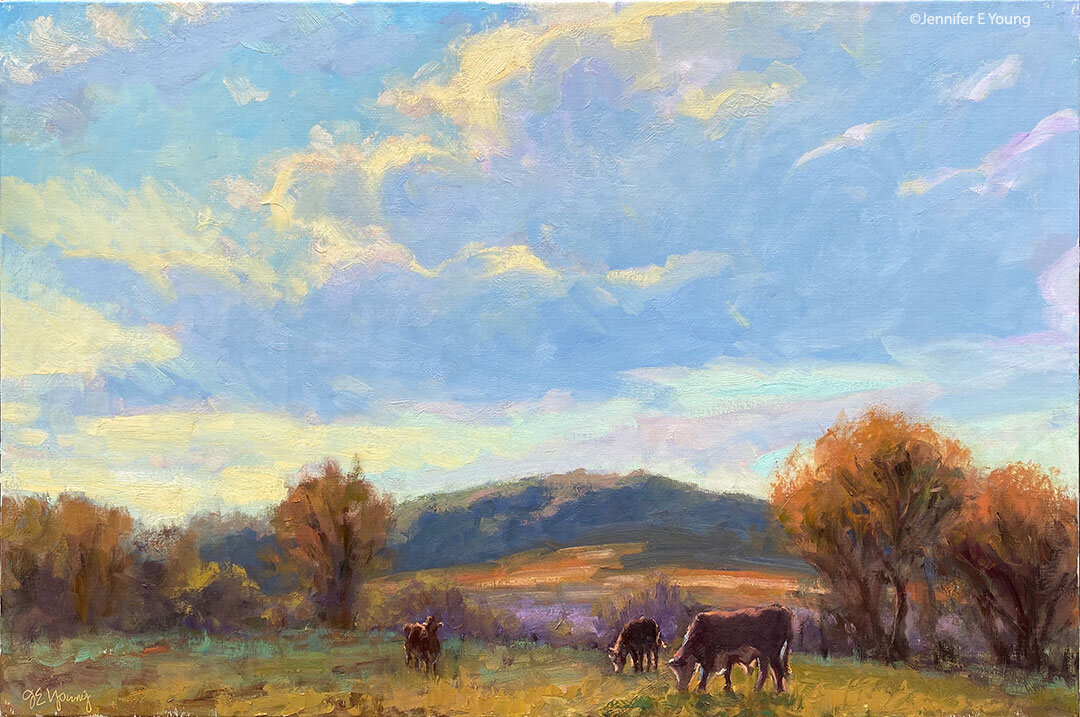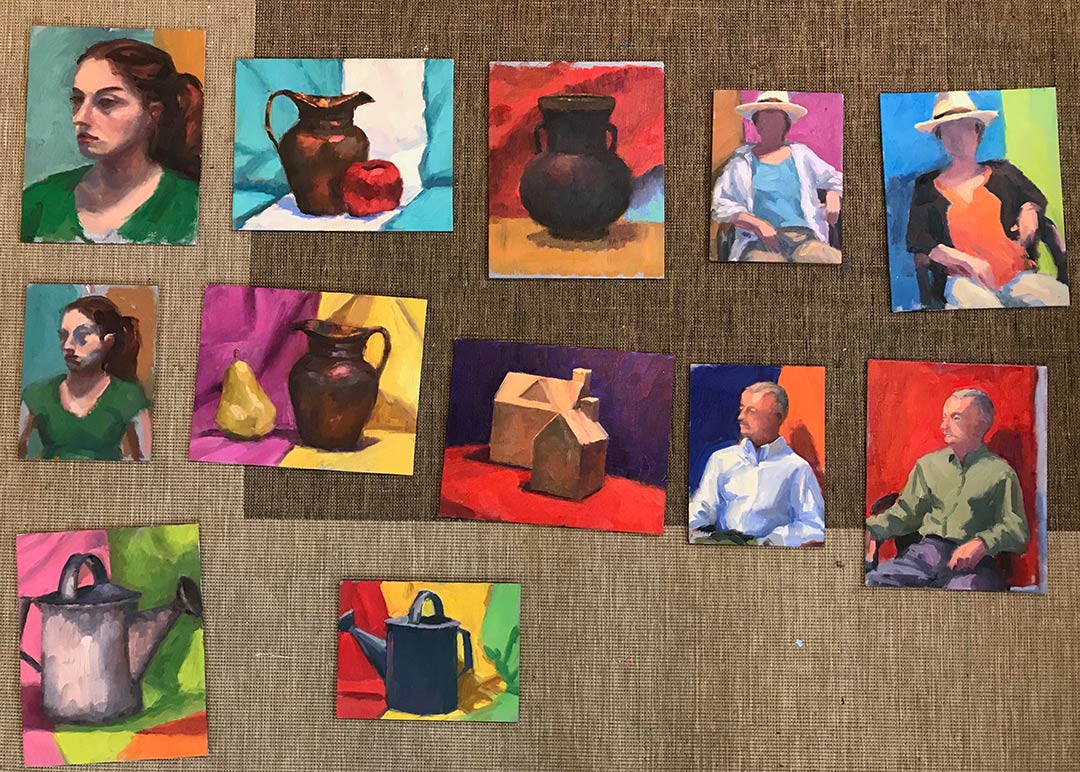Plein air painting tips
/The other day Misti posed a few really good questions in my comments section about plein air painting. So I thought I'd share her questions and expand on my response below.
"I have been wanting to do some plein air work but am sort of afraid of diving in. I think it is the whole finished product I am afraid of as well as the time. How long do you spend working on a painting and what do you do with light changes? or do you choose a specific time when you will have the most time?Thanks!"
Thanks for your comment. As I said in my previous response, I can really empathize with your concerns. It's common to want to feel a sense of accomplishment when you put forth such effort. When I first started painting en plein air, a lot of my studies went straight from easel to the trash heap! It can take some time to really develop a process that works well enough to capture that fleeting light and elusive feeling that inspired you to paint it in the first place.
A few thoughts and suggestions:
- To battle with that ever-changing light, it helps if you make a decision about the light you want to paint, and commit to that even if the light changes and the clouds roll in. This is very challenging, as you have to get your main color and shadow notes down pretty quickly to commit to that idea.
- Due to its rectangular format, a photograph will already provide a composition for your painting. When you're painting on location it can be a little overwhelming because the scene before you is so expansive and it can be difficult to translate all of that 3-D information onto a small rectangular 2 dimensional plane.
- To help with this, it is a very good idea to do a little planning even before you start your painting. I like to bring a small sketchbook with me and make some very quick thumbnail pencil sketches before I commit to a particular composition. In this way I can determine where to place my center of interest and how to frame my scene.
- In regards to "how long," two hours has been the maximum amount of time that I've been able to paint at one sitting on location, and even then that can be pushing it. Any longer and the light has changed too drastically and it just causes you confusion. Better to come back to the scene at the same time again the next day and finish up.
- If a return visit on a subsequent day isn't possible, another option is to take a photo when you start and when you end and use these references to make a few finishing touches to your painting. The danger here is that once you get back to the studio you can lose the information and freshness you've captured on location if you overwork it too much away from the source.
- A better option may be to work small. This is particularly true if you are just beginning to paint on location. Working on small canvases allows you to more easily cover your canvas in the limited time frame. You may feel less overwhelmed and less worried about possible "failure" (though in reality, any time spent learning is never a failure, regardless of the finished product!)
- As for the time of day, mornings and evenings offer the most interesting light and shadow. By noon all of the light is pretty flat and shadows have disappeared, so this is least appealing to me. I find the mornings a little easier than the evenings, simply because the light doesn't change quite so quickly. However, there is nothing so seductive as that beautiful golden evening light. And if you really want to do some turbo-charged painting, try painting a sunset!
- Most importantly, go about it with an open mind and with no expectations other than that you are showing up to learn and to experience. With persistence your studies will get stronger, and the benefit you have gained from the experience will pay off big time for you in your studio work as well. At least, that is what I have found in my own work.
And with those thoughts on plein air painting, I am off for a week to do a little of my own. We're off to the beach and I'd be surprised if blogging will be an option. Have a great Labor Day Weekend everyone and I'll be back to posting when I return!

















